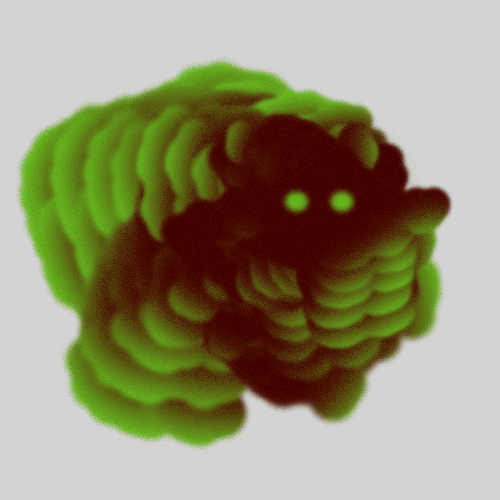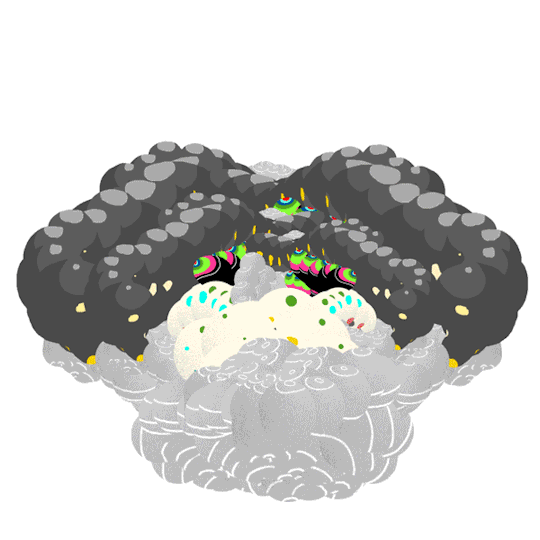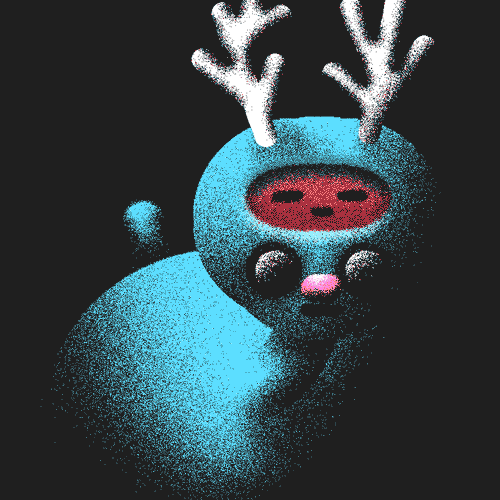Before clients and corporate gigs, there was the divine muse. It flowed through artists, guiding their hands to create masterpieces in paint, ink, and pen. Now projects are planned—work is reviewed, revised, and approved. Rarely do we enjoy the free flow of creativity. But for illustrator and animator Ori Toor, there’s no other way to work.
“Whenever I plan or overthink something, I ruin it,” says Toor. “When I rush to my computer and just start doing stuff without having something in my head, it always ends up really interesting. I never work with references because of that.”
For Toor, drawing and animating have always been natural processes relatively free of rules and regulations. His mother designed carpets for a living, and he grew up among spools of intricately wrought patterns and designs. “I was really encouraged by my mom to draw all the time, but I was more interested in cartoons,” he says. “I always wanted to be an animator because it felt like a superpower…you can do just about anything that you want, and it felt very powerful, very limitless.”
Growing up in Tel Aviv, Israel, Toor took a variety of art and illustration classes. At university, he studied illustration, honing his pen-and-paper techniques while building skills in digital tools like Adobe Photoshop and Illustrator. He also took a handful of animation classes, learning about timing, movement, and mass. He found that he had an innate talent for timing and old-fashioned frame-by-frame animation. Guided by his own inner muse, he began playing around with Flash, combining short loops into organic compositions.
Toor made a few music videos this way, painstakingly stitching his loops together into swirling visual maelstroms. One of his first was for the band Vial of Sound. But each music video was months in the making. He needed a faster way to make and publish his animations. So he started creating quick loops, simple 48-frame GIFs to explore new techniques and concepts. Each one is different and inspired, in part, by the tools he uses.

One recent GIF, affectionately named Lettucehead (left) was made entirely in Adobe After Effects: Toor animated the core motion by hand, giving it a jittery, hectic feel; then he duplicated and stacked the animations on different layers to create the twirling loop of green-black smoke.
For other GIFs, Toor draws two or three loops in Photoshop, and then pulls them into After Effects for further manipulation. The other above GIF, titled 1, combines three or four loops into one churning vortex.
“I basically take a few loops that I created in Photoshop and multiply them 50 times to get this crazy shape,” he says. “One of the things that I really like and that never ceases to amaze me about After Effects is that it just takes the PSD file as-is. You just import as a smart object and it just happens. I don’t have to export anything.”

Never satisfied with just one method, Toor often dives into one app to explore tools and techniques. His piece faraway (above left) was made exclusively in Flash, using layered frame-by-frame animations in on one timeline.
“I get bored, I suppose,” says Toor. “I like being surprised by what I do. I like the fact that I’m not really sure what it’s going to look like. I like the freedom.”
He has frequently used Photoshop as his primary animation tool, usually limiting himself to just 24 frames—two seconds at 12 frames per second. Toor became enamored with simple tools used sparingly, like a brush in dissolve mode. “At one point, I’d kind of sunk into a depression a bit, so the nature of the loops changed. They became a little more creepy. I also decided to challenge myself. I handcrafted this grainy style [in A night journey in disguise, above right, and Astrofunk, below left] with just a regular Photoshop brush in dissolve mode.”
Toor also created a set of custom brushes to make animation easier. His palette of face brushes (above right, click to enlarge) is a great example. He crafts faces (and other bits) in Photoshop; then he converts each illustration into its own brush that can be used later.

Recently, Toor has taken to creating animation effects in After Effects by using standard tools in novel ways. In a recent untitled loop (below left), Toor drew a few simple shapes and then cranked up and blurred a channel effect.
“I take really simple shapes and I start moving them around, I do an adjustment layer where I blur everything out, and then I crush it with the levels on alpha, and it melts everything together.” he says. “It gives it a kind of microwaved jelly beans look. When I move things around, the shapes stick to each other, and I love that.”
The tools themselves are inspiration and an influence for Toor. “I really get inspired by the tools, because I always look for new ways to make things,” he says. “I get tired or I need a refresher from the things that I currently do. I just start exploring. I think a week ago I discovered the Mixer Brush tool in Photoshop, and I started animating with that. It’s not an animation tool, but it’s amazing what you can do with it [above right].”

Of course, Toor still needs to make a living. He’s currently working as a freelance animator and illustrator, creating work for corporations and publications. His current roster includes animations for a live performance and illustrations for a video game. When it comes to working with clients, Toor takes a unique approach. He never starts with a visual reference. “Whenever I start with a reference, I just end up tracing it and trying to work it into my own ideas, and it never turns out,” he says.
Instead, Toor studies and examines the reference materials and starts in that most terrifying of creative spaces: the blank canvas. He lets the reference materials guide his inner muse rather than trying to mash them into his own work. “I can’t write out ideas or create detailed sketches of what I’m going to do; I just can’t work like that,” he says.
In the future, Toor would like to explore 3D tools and interactive storytelling. “I would like to work with video games in some capacity,” he says. “I find them fascinating. To me, they’re much more fascinating than full-length films or music videos. I’d like to see what I could contribute to something like that, an interactive project. But I’m always playing and exploring. I always say that I’m playing with Lego, but I’m building the bricks as well. I think that’s a great way to look at my work.”
Check out more of Ori Toor’s work on his Behance profile.
